Brazil Atlantic Rainforest Trip Report 2025
Southeast Brazil holds a large diversity of flora and fauna, tucked into mountainous parks and reserves in the once-vast Atlantic forest. Endemism is high, with around 40% of plants and 200 species of birds being found only here. Our tour visited several key locations, including Itataia National Park, Ubatuba, and Intervales State Park. When inside these forest reserves, our group of eight (six guests plus two leaders, Steve Ogle and Filipe Arantes) experienced a seemingly unending stream of exotic species, enjoyed while on pleasant walks in mostly ideal conditions. It rained during two of the eleven days of birding and otherwise the weather was overcast, calm and relatively cool.
Days 1-4: Itatiaia National Park
After our meeting at the Marriott Hotel near Sao Paulo airport, we recovered from our travels with a good night’s sleep then set off after breakfast to start our tour. The team was six guests from the U.S. and Canada, plus local guide Felipe Arantes, Eagle-Eye guide Steve Ogle and Wagner, our steady driver. On the way to Itatiaia National Park, we broke up the drive with a stop at a wetland near Canas, where we spent 1.5 hours. Our first birds of the tour included open-country specialties such as Rusty-collared Seedeater (female), Swainson’s Flycatcher and Grassland Sparrow. A pair of endemic Band-winged Horneros flew across the causeway, as did two Aplomado Falcons and several distant White Woodpeckers. A lone Brazilian Teal made a brief appearance. Yellow-rumped Marshbird and Unicolored Blackbird also popped up. It was a good start.
At Itatiaia we were ascending the driveway to our hotel and stalled out with some toucans. This doesn’t happen often, but Hotel do Ype is one place where you can see a variety of these gawdy birds back-to-back. In no less than ten minutes, we had looks at Red-breasted Toucan, and both Spot-billed and Saffron Toucanets! We’d have later views of After this, we had lunch, unpacked and enjoyed the feeders and then back down the access road for a short walk. It was difficult to sort through all the new birds but Felipe does an excellent job at presenting them one by one. Highlights were Frilled Coquette, Pallid Spinetail, Black-billed Scythebill, Swallow Tanager and Slaty-breasted Wood-Rail.
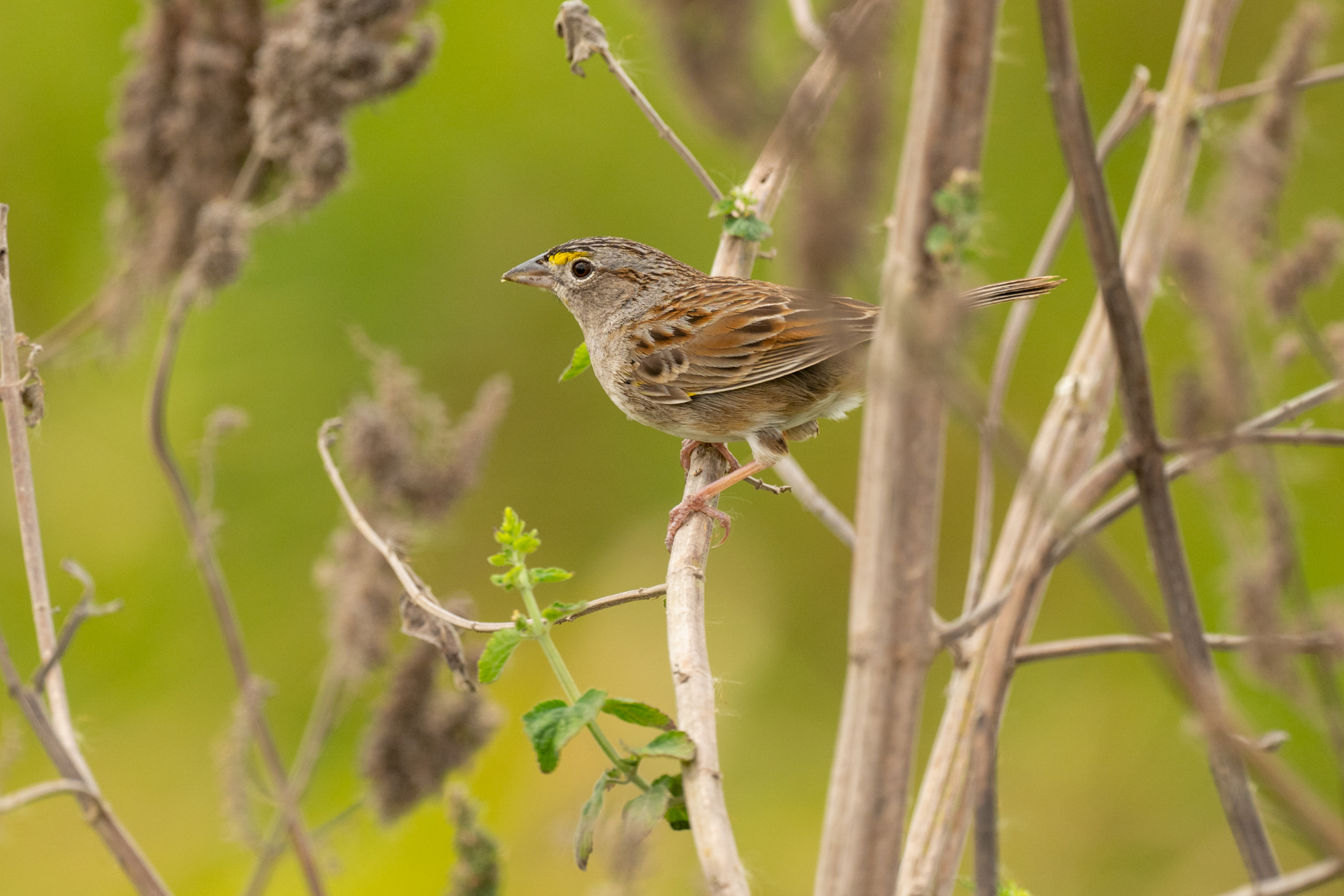
Grassland Sparrow © Steve Ogle
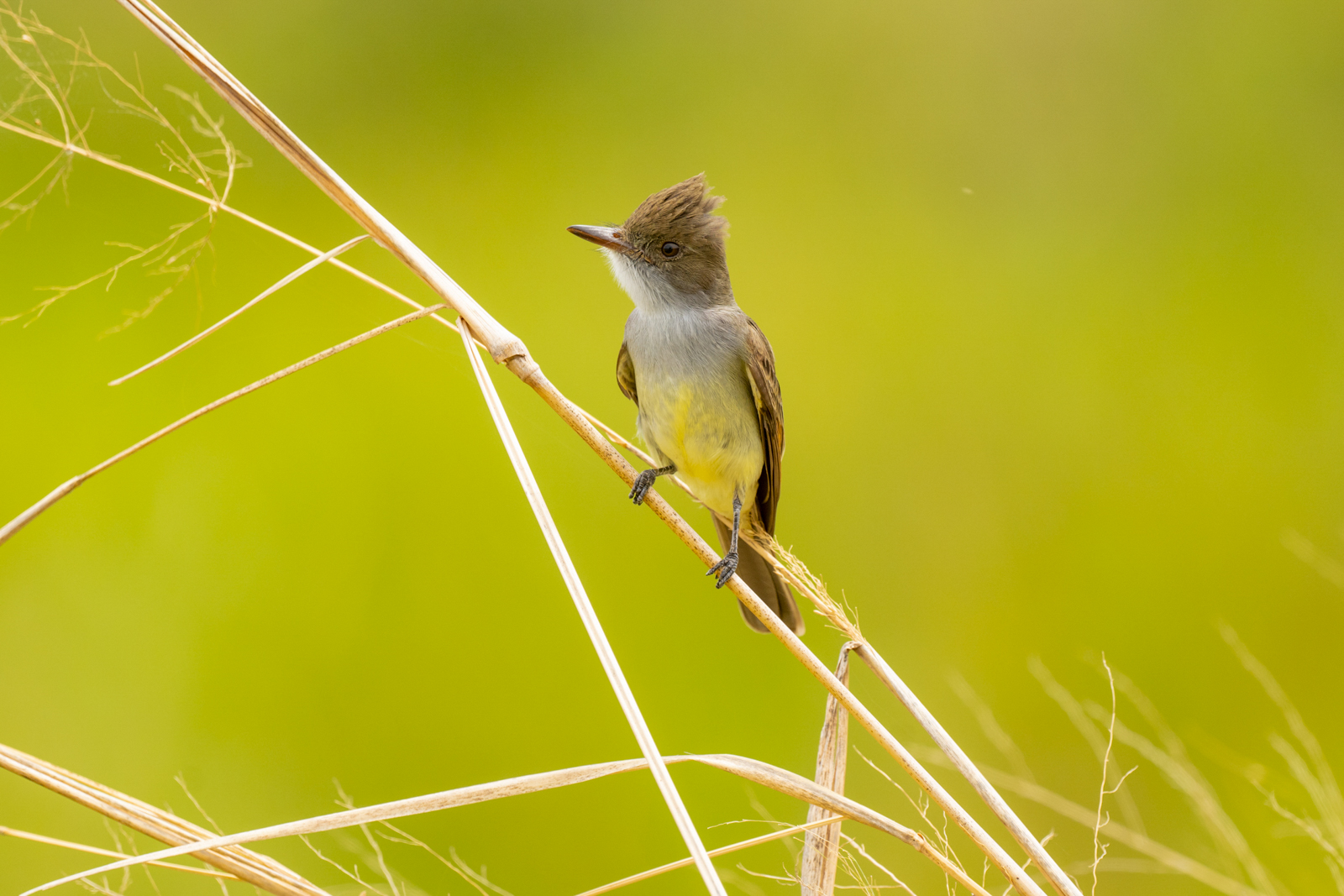
Swainson’s Flycatcher © Steve Ogle
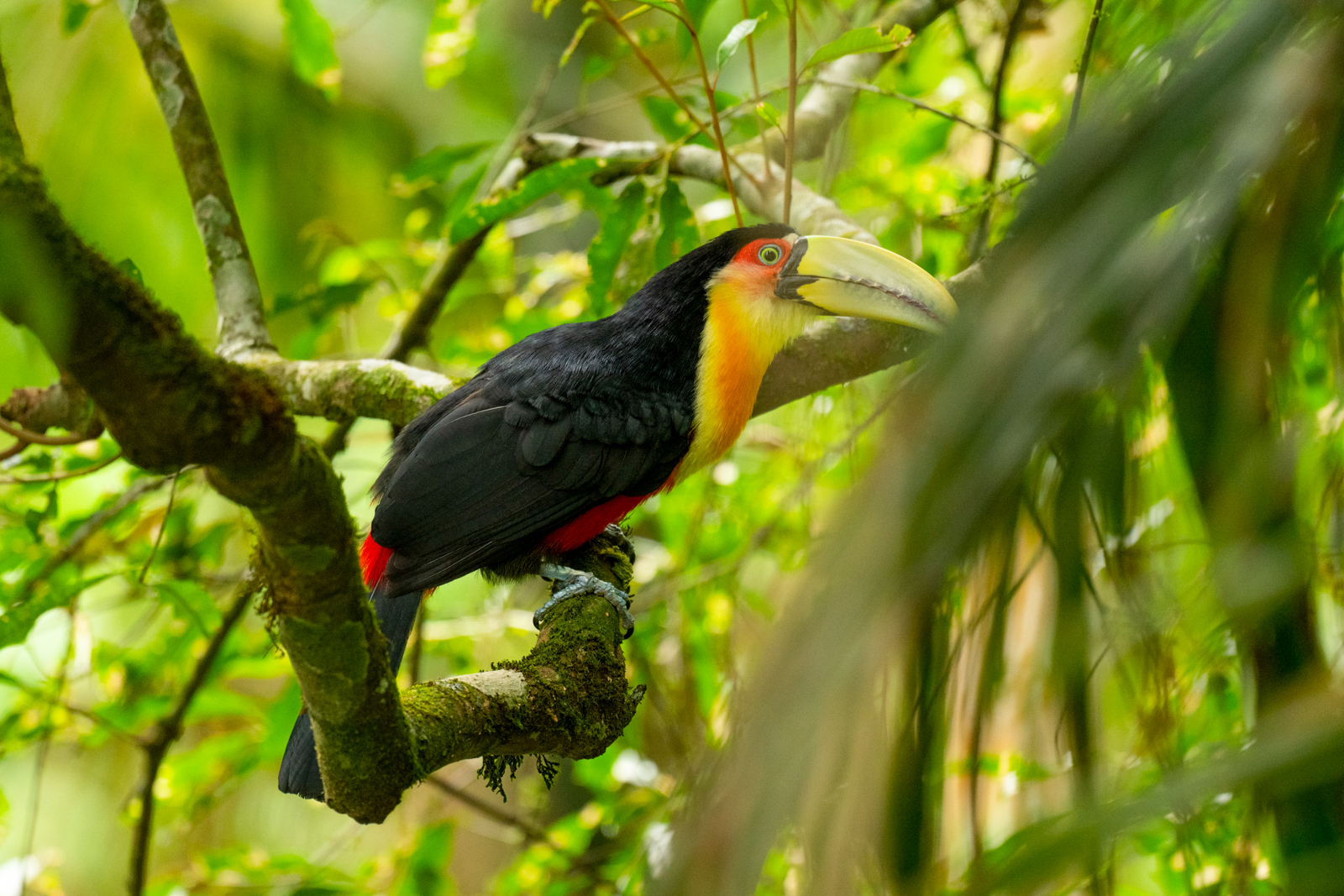
Red-breasted Toucan © Steve Ogle
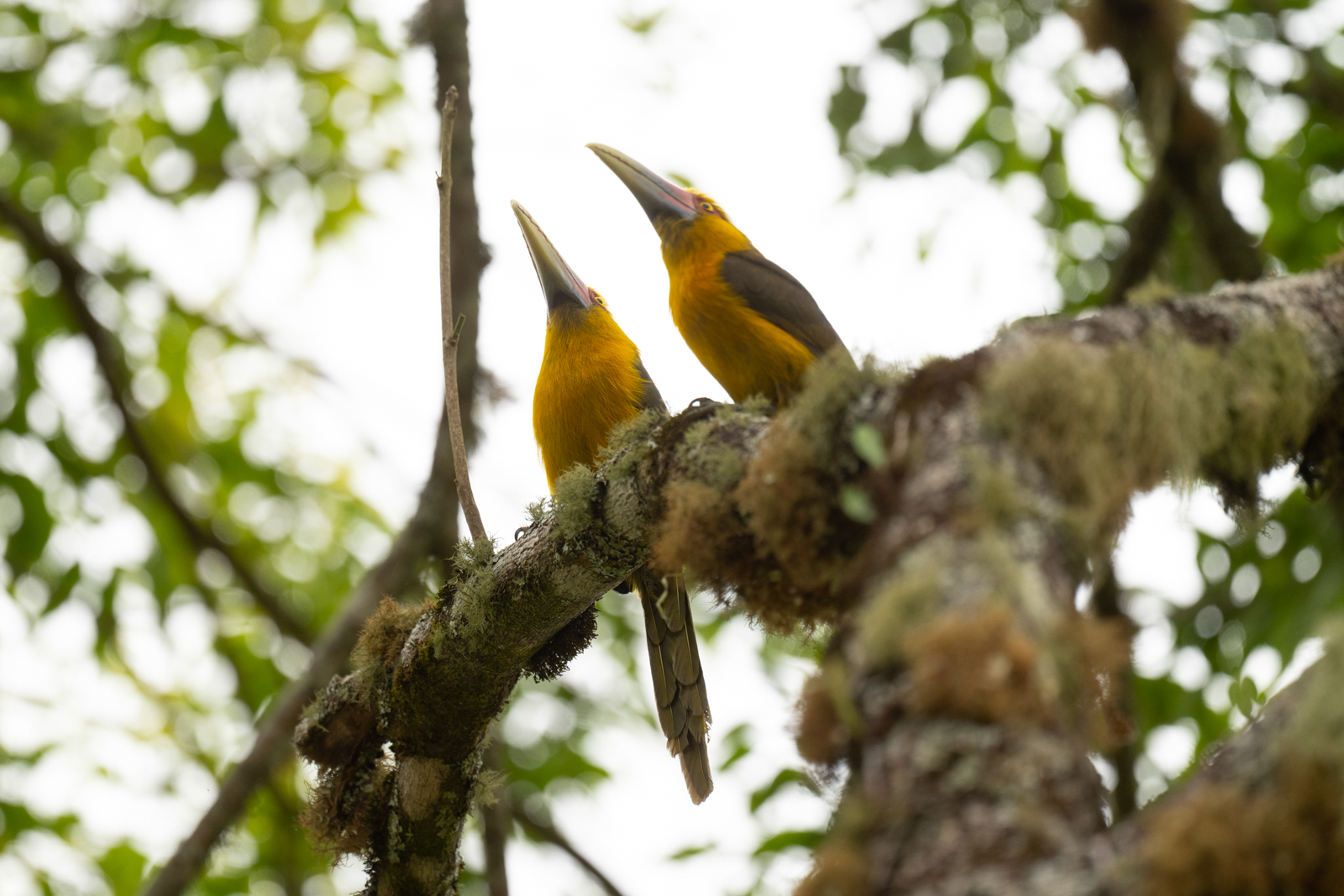
Saffron Toucanets © Steve Ogle
The next two full days in Itatiaia were spent first at the elevations around the hotel, then a highland component. The hotel feeders were a highlight and were visited by many species such as Green-headed Tanager, Brazilian Ruby, Dusky-legged Guan and Double-collared Seedeater. We hiked the Dos Puris trail and had a brief but nasty encounter with a hornet nest that was disturbed by two other hikers. One guest was stung a few times but thankfully the results were not long-lasting. Species encountered were Gray-headed Tody-flycatcher, Surucua Trogon (excavating a nest), Rough-legged Tyrannulet and Greenish Schiffornis. We had decent looks at the endemic White-bellied Antbird. A later hike resulted in good views of a Sharp-tailed Streamcreeper. A Tawny-browed Owl visited the hotel on two of the three nights .

Frilled Coquette © Steve Ogle
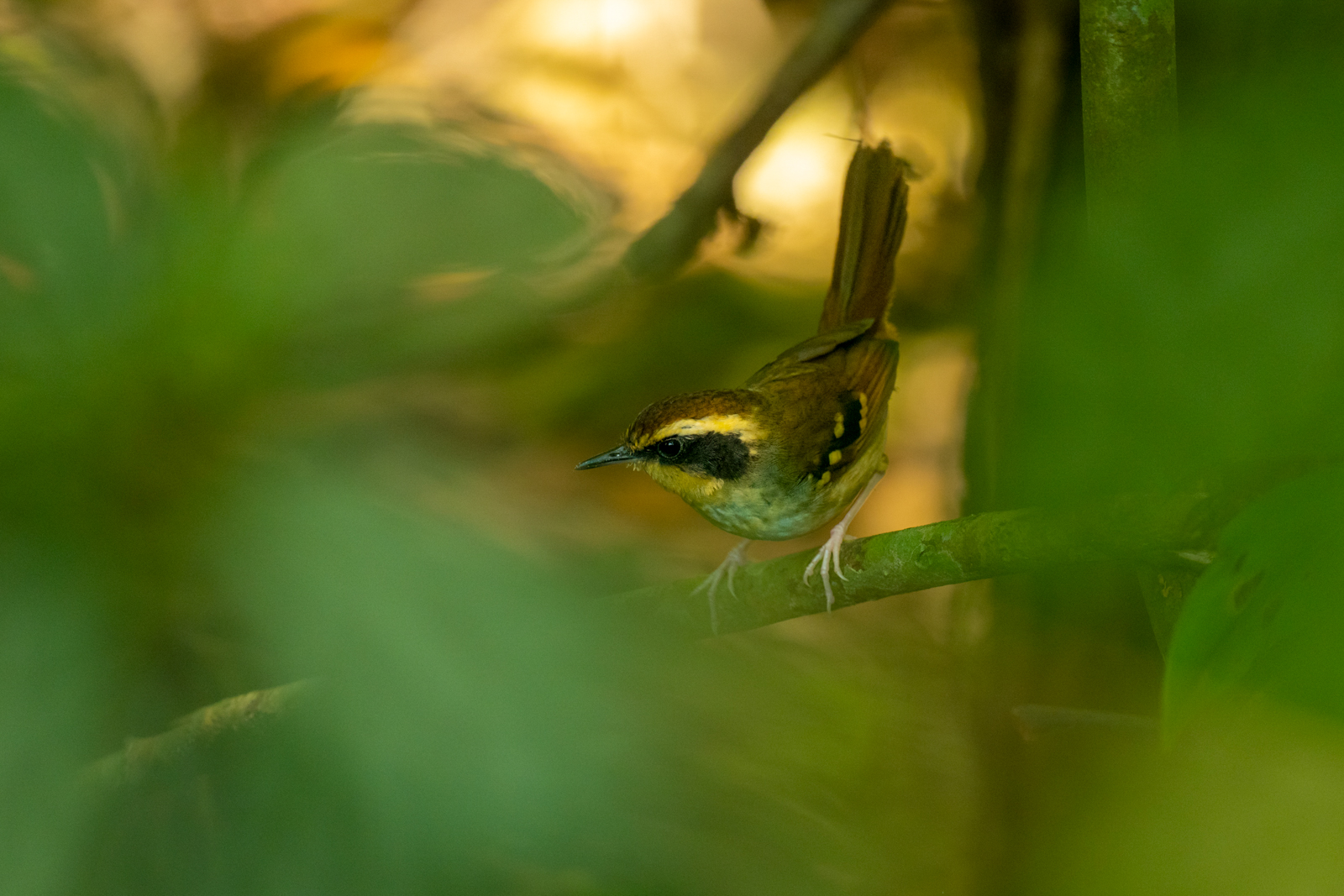
White-bellied Antbird © Steve Ogle
Our trip to the higher part of Itatiaia, a place with grasslands and boulders, was rewarding as we cleaned up on most of the target endemics: Itatiaia Spinetail, Green-crowned Plovercrest, Black-and-gold Cotinga, Rufous-backed Antvireo, Mouse-colored Tapaculo, Serra do Mar Bristle-Tyrant, Bay-chested Warbling Finch and Black-capped Piprites. Rufous-capped Antshrike and the endangered Gray-backed Tachuri were other highlights. The latter bird went in as a contender for “Cutest bird of the trip,” although we were only a few days in. On the way down we stopped at a farm to look for Firewood Gatherer, an interesting name for an uninteresting bird. It was a great stop, however, as we picked up on a dozen or more new trip birds, including Sooty Tyrannulet, Fork-tailed Flycatcher, Pantanal Snipe and the spectacular Streamer-tailed Tyrant. An angry cow chased us away, which seems hard to believe but since none of us lived on a farm who were we to argue? This ended an exciting day.
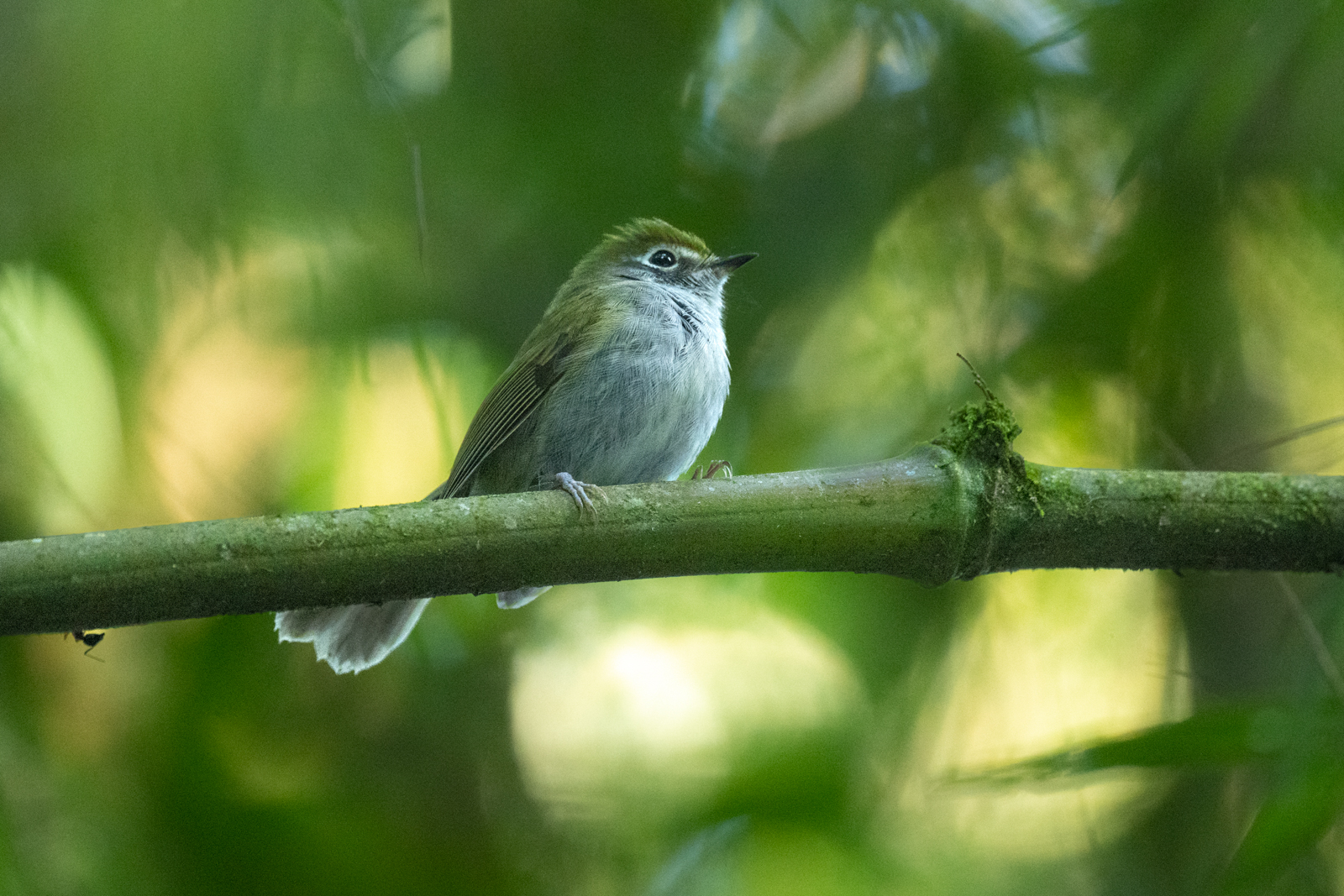
Sao Paulo Bristle-Tyrant © Steve Ogle

Gray-backed Tachuri © Steve Ogle
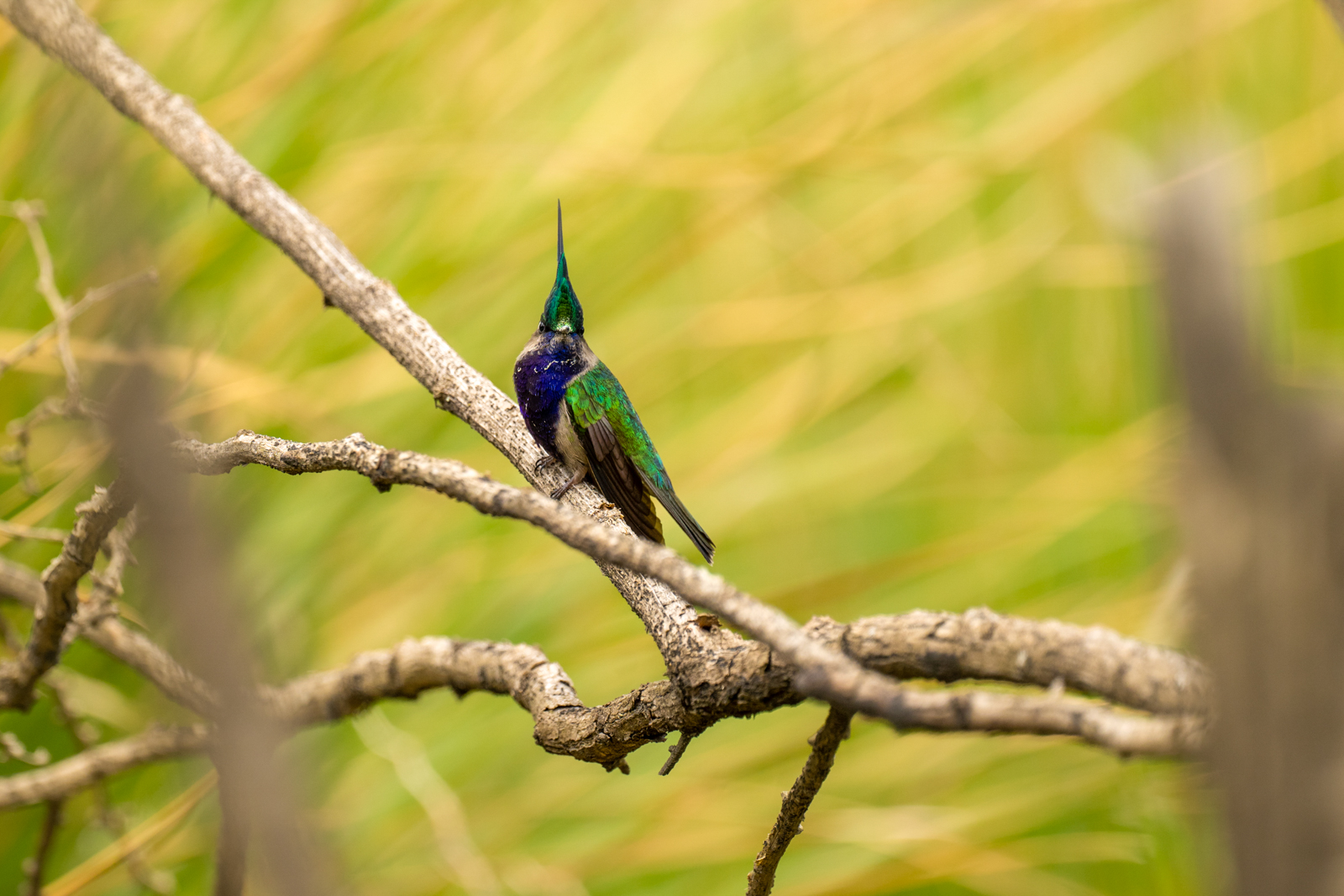
Green-crowned Plovercrest © Steve Ogle
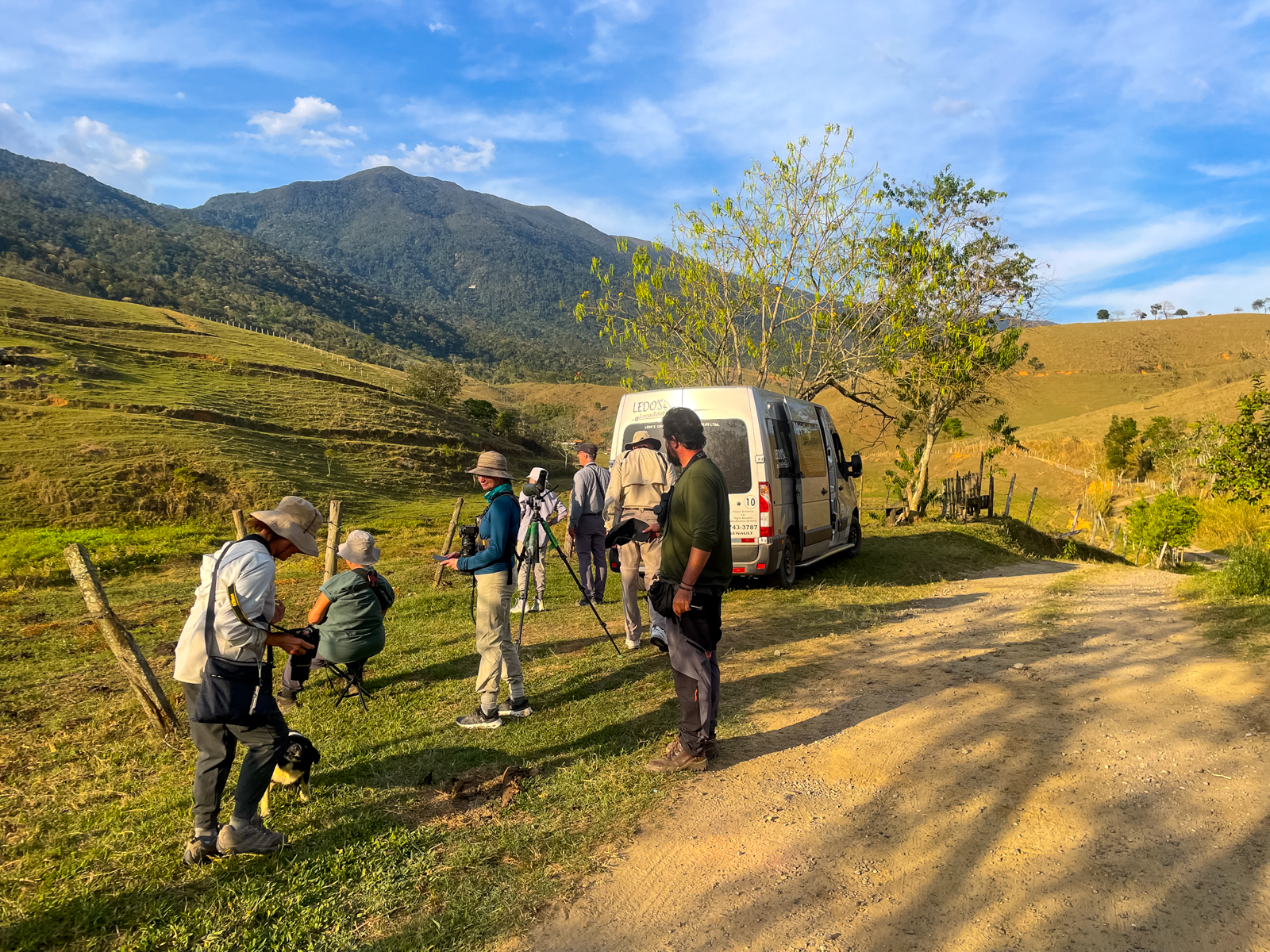
Firewood Gatherer Spot © Steve Ogle
The final morning at Itatiaia was spent walking up the same road that connected to the upper reaches of the mountain, but from the hotel side of things. Thankfully we only walked about 500 metres of the 20km or so. On the way we saw Uniform Finch, Rufous-capped Motmot, Black-goggled Tanager, Large-headed Flatbill (some folks thought this one was fairly cute), some flyover Blue-winged Macaws and a female Slaty Bristlefront. After this we drove to Ubatuba with a lunch stop where we saw a Hooded Tanager and accepted that the Brazilians have the buffet system dialed in.
Days 5-7: Ubatuba
The rain began in earnest when we descended the Serra do Mar range into the lowlands. A cold front had arrived, which means several days of heavy rain, wind, and cooler temps. For the next two days it was not only a challenge to keep our gear dry but also for the guides to dig up the birds. An evening stroll at a marsh did not amount to much bird viewing, but we had our first good looks at the crimson Brazilian Tanager. Fazenda Angelim was wet but we still managed to hike to the end of the double-track and find Scaled and Squamate Antbirds, Uniform Antwren, Spot-backed Antshrike, Gray-hooded Attila, and Flame-crested Tanager. Fohla Seca was a highlight, as we could sit under a veranda and watch the feeders up close. Saw-billed Hermit, Festive Coquette, Sombre Hummingbird, and Red-necked Tanager all showed well. Memory cards were filled here.

Festive Coquette © Steve Ogle

Red-naped Tanager © Steve Ogle
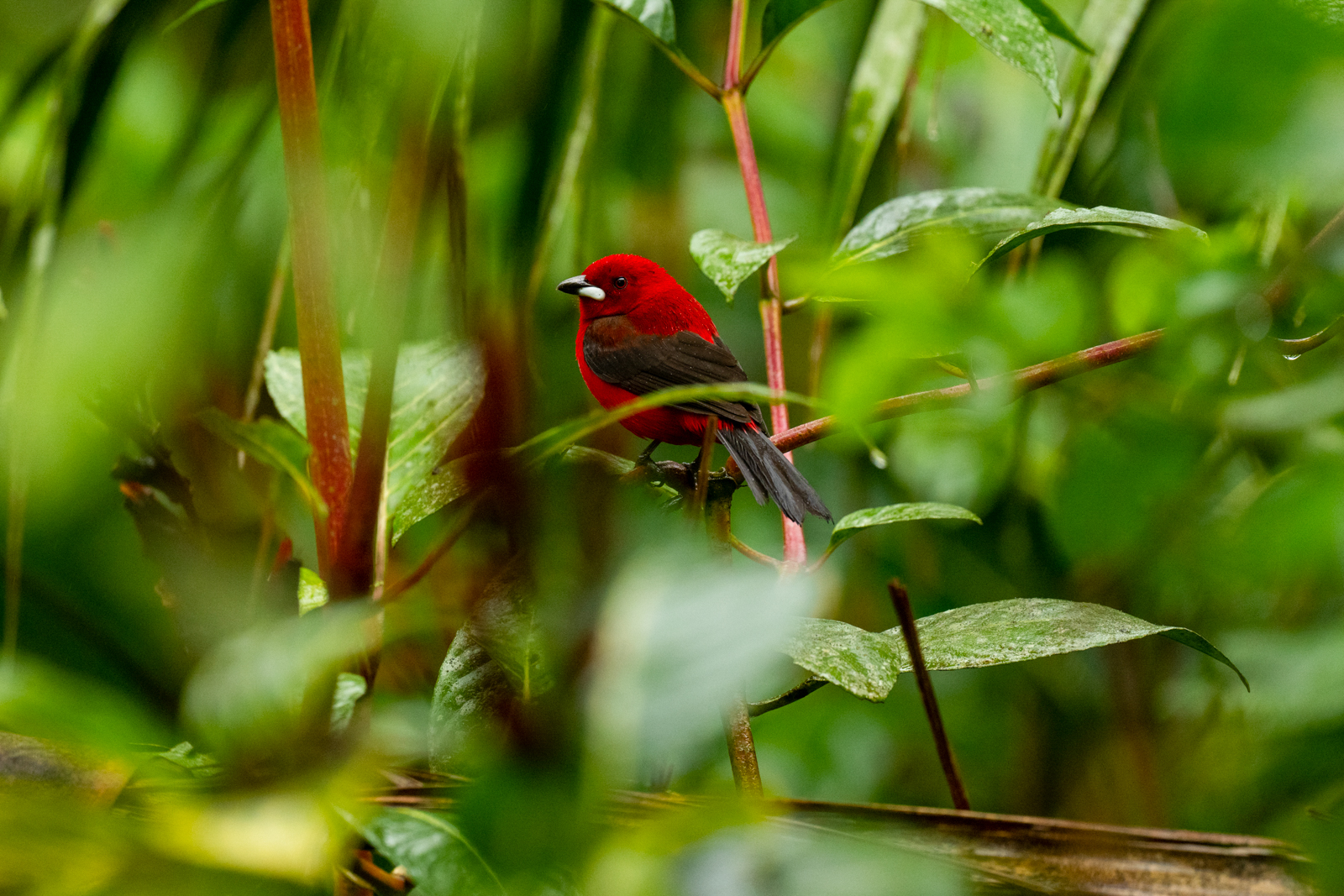
Brazilian Tanager © Steve Ogle
Our last morning was spent at Poço Verde, or “The Condominiums,” where we did an out-and-back track. The rain subsided enough to get some good birds: Long-billed Wren, Black-cheeked Gnateater, Blond-crested Woodpecker, White-shouldered Fire-eye, Crescent-chested Puffbird, and Riverbank Warbler. From here it was straight up the hill to Salesópolis to spend a chilly night. First we made a stop for a suite of new birds, with one in particular being quite rare. Luckily, the Marsh Antwren was relatively easy to see, albeit almost impossible to photograph. We also got looks at Yellow-browed Tyrant, Orange-breasted Thornbird, Toco Toucan and the ghostly Bare-throated Bellbird. Thankfully, when we arrived at the hotel there was a raging fire at the restaurant warming us up.
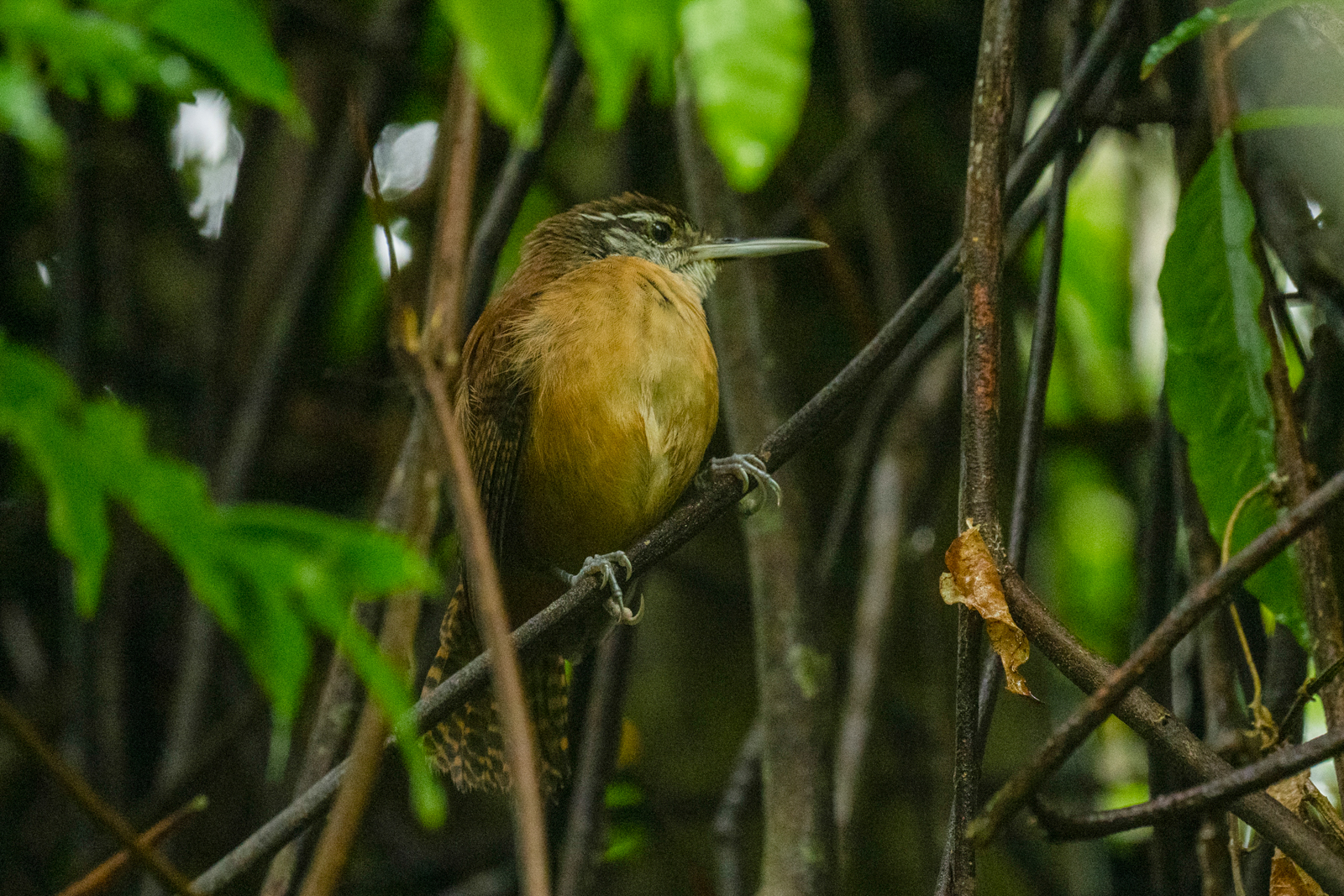
Long-billed Wren © Steve Ogle
Days 8: Salesópolis
This morning we visited Macuquinho Lodge, home of artistic bird feeders, tasty breakfast and viewing blinds for elusive species like Brown Tinamou and Red-and-white Crake. We only managed to see the latter, but we did get good looks at Half-collared Sparrow from inside a cozy blind. An all-too-elusive Giant Antshrike did not reveal itself, but we did see Ochre-faced Tody-Flycatcher in the bamboo. The feeders were extravagant but not as busy as they can get, according to Felipe. The afternoon was spent on a long drive to Intervales, made even longer by a mysterious two-hour delay in a traffic jam.
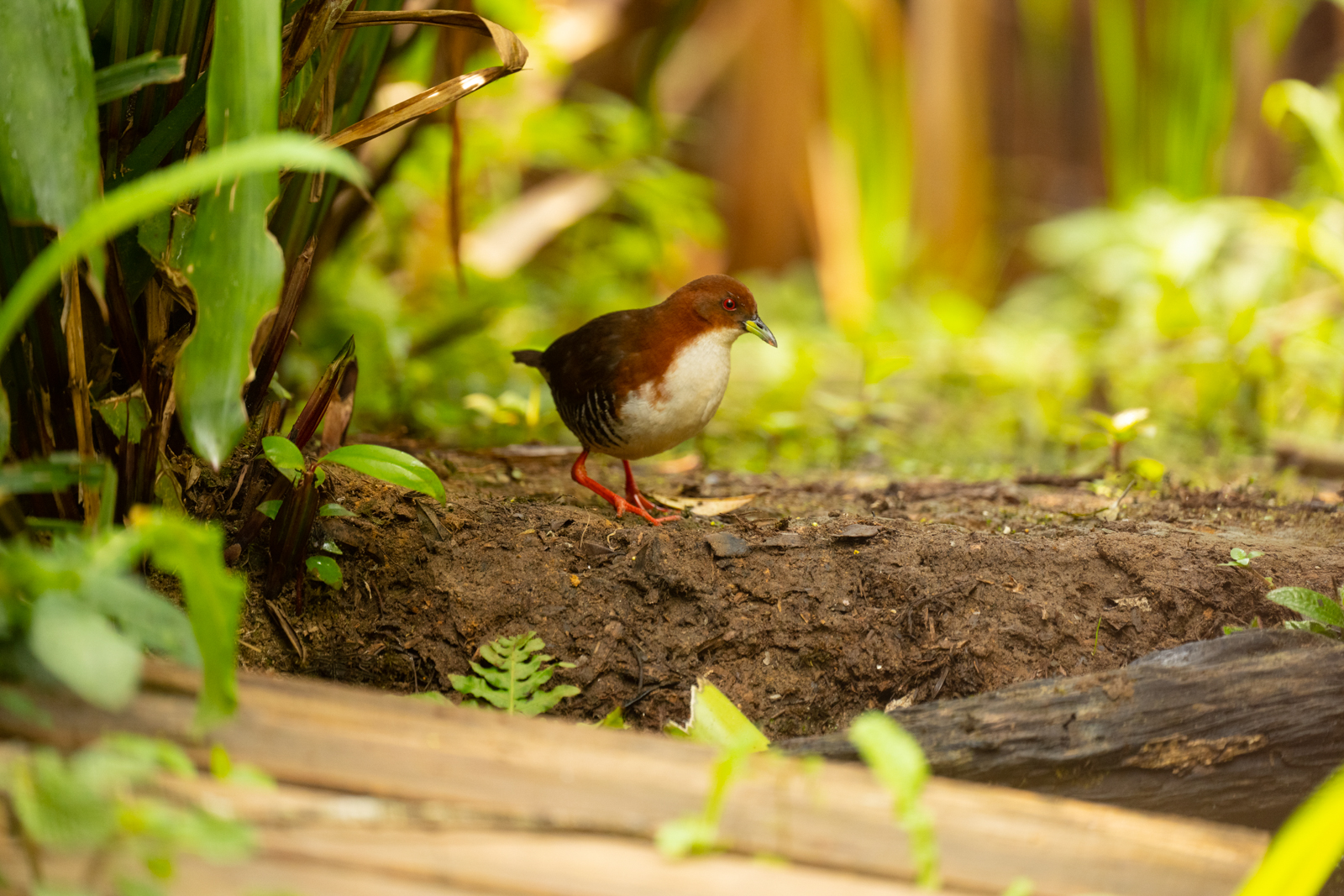
Red-and-white Crake © Steve Ogle
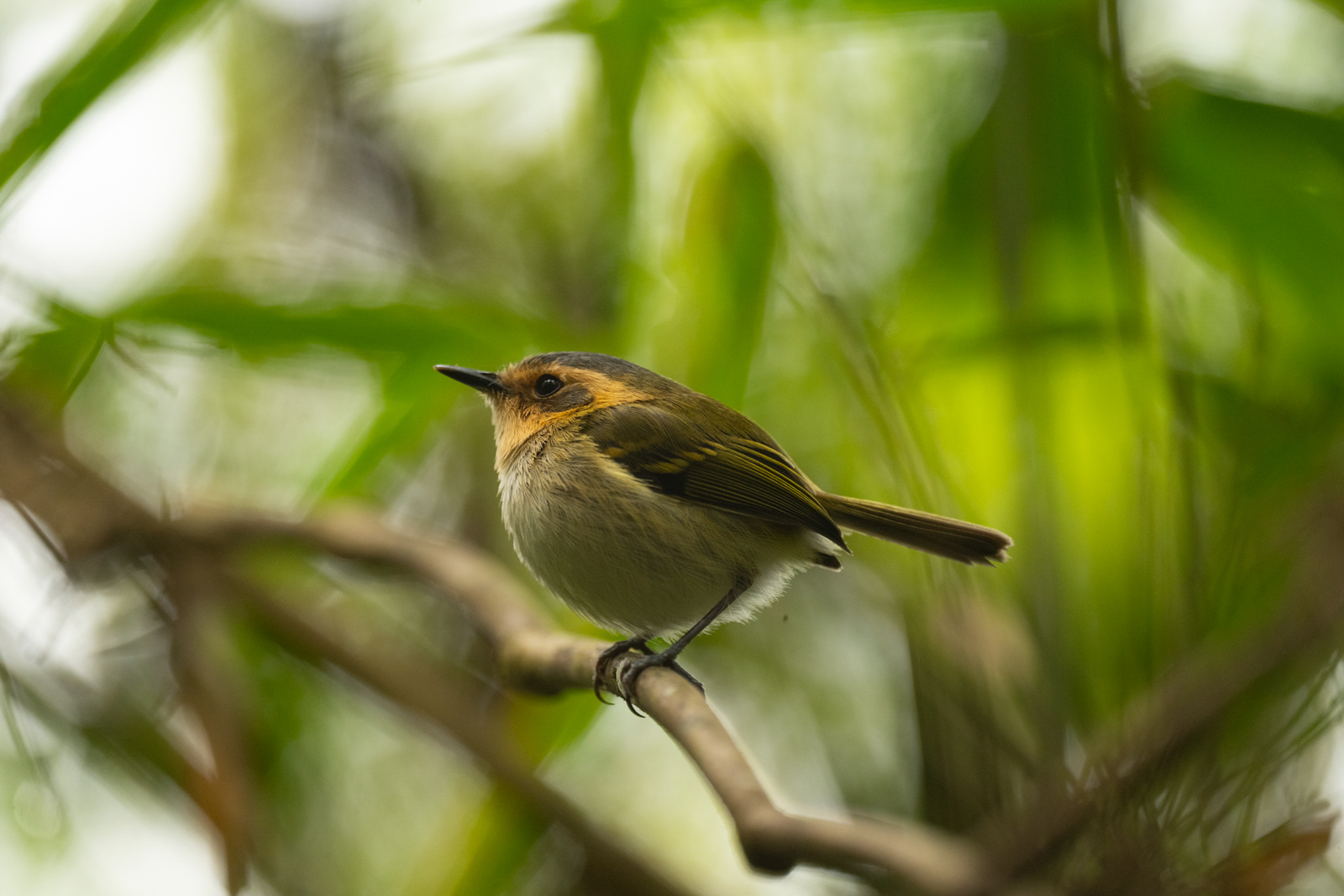
Ochre-faced Tody-Flycatcher © Steve Ogle

Macuquinho feeders © Steve Ogle
Days 9-12: Intervales State Park
Our final destination was Intervales, part of the largest contiguous tract of intact Atlantic rainforest. We settled in to our “rustic” cabins, which turned out to be quite cozy, however very basic (limited furniture and no internet). We did spend a lot of time at the restaurant just outside of the park, which did have a connection. It also had a couple of great birds, like the Araucaria Tit-Spinetail and Chestnut-backed Tanager!
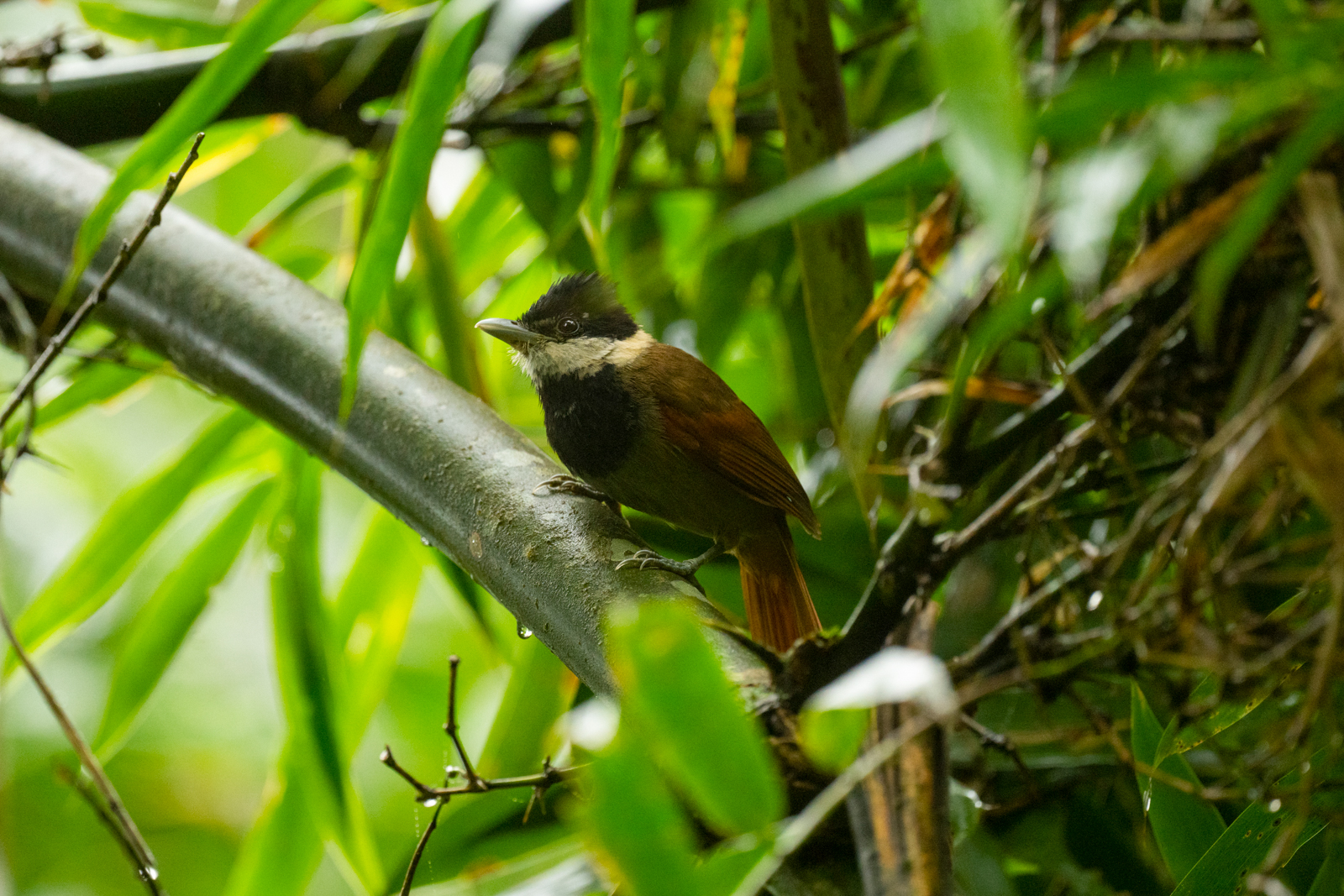
White-bearded Antshrike © Steve Ogle
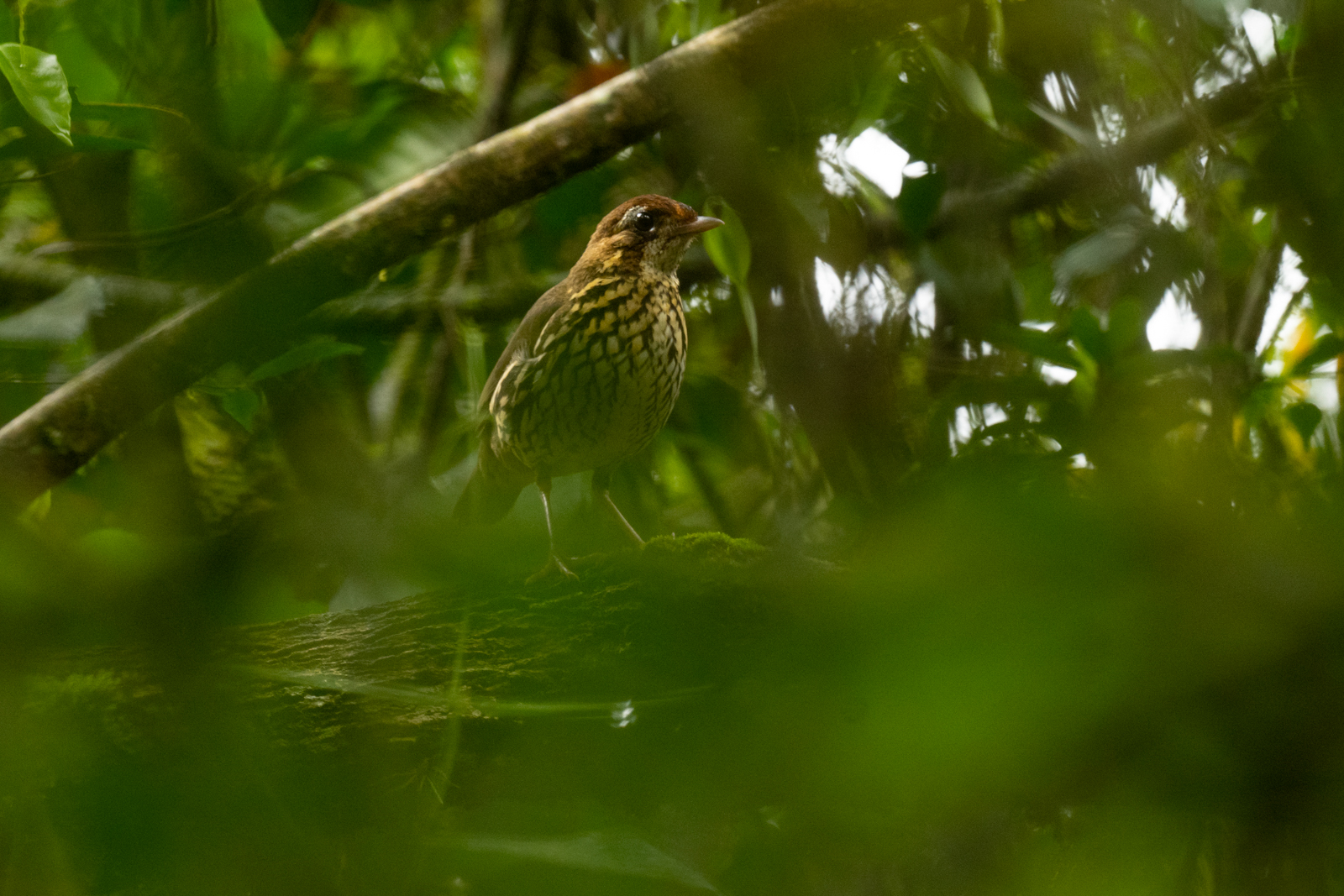
Short-tailed Antthrush © Steve Ogle

Surucua Trogon © Steve Ogle
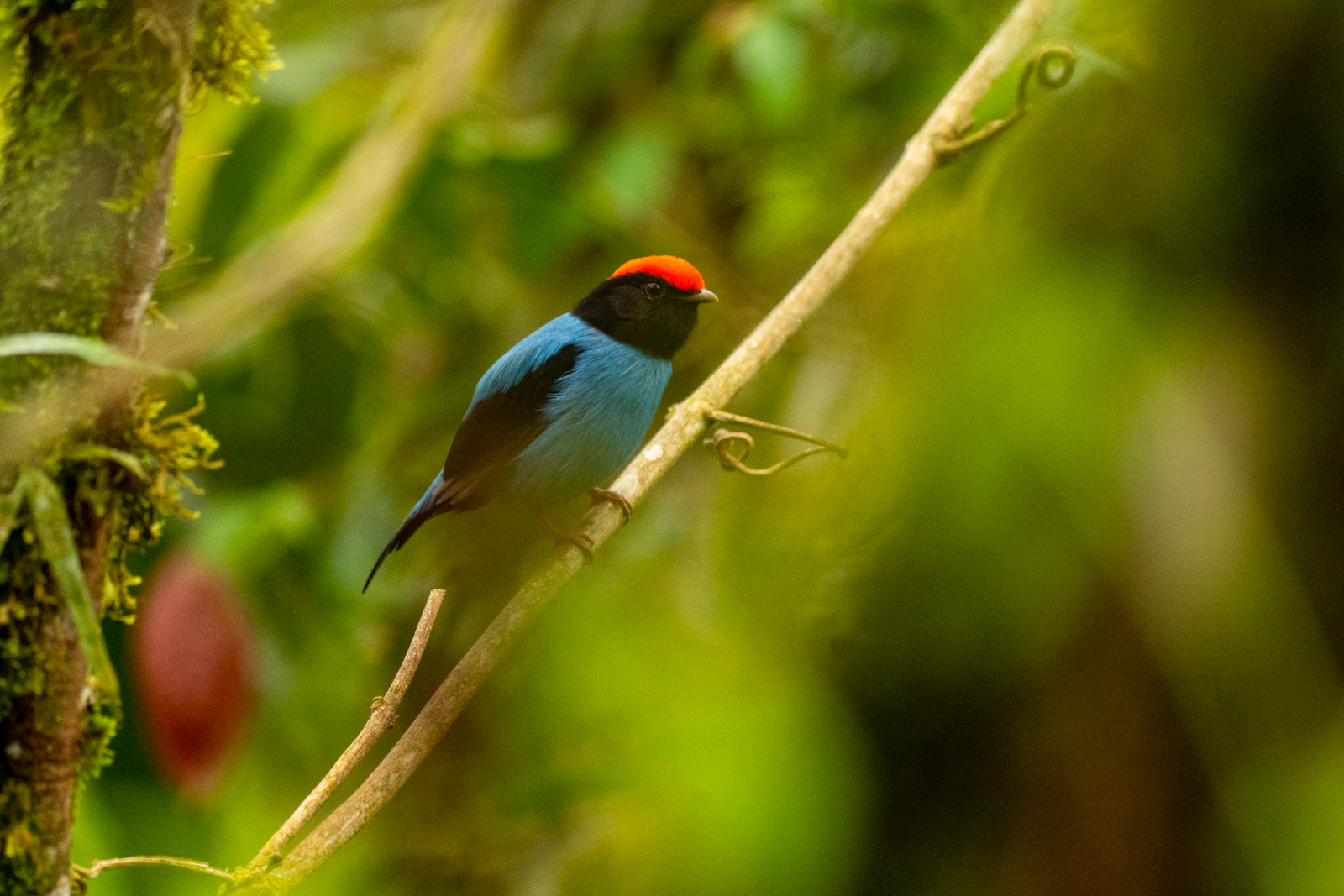
Swallow-tailed Manakin © Steve Ogle
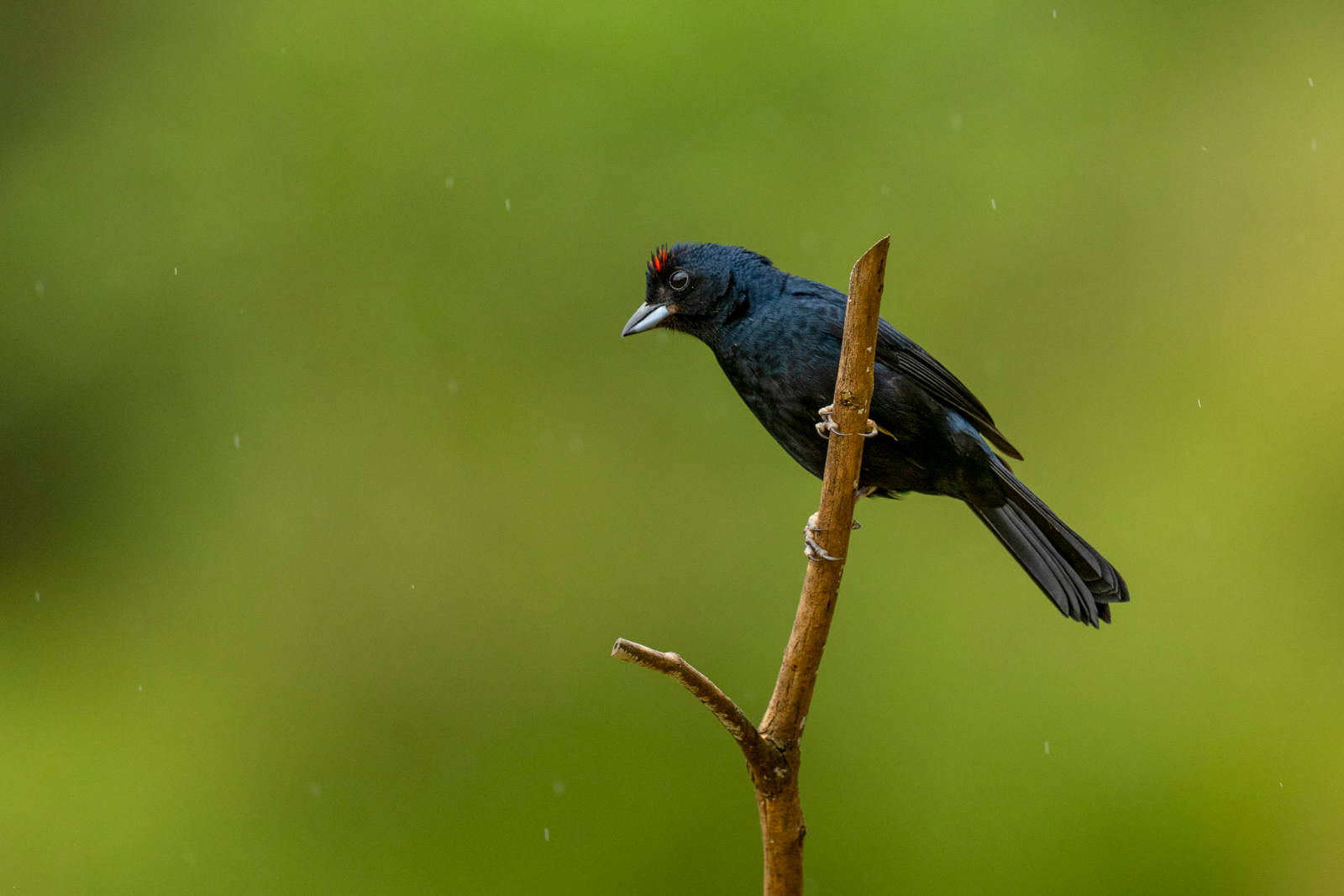
Rudy-crowned Tanager © Steve Ogle
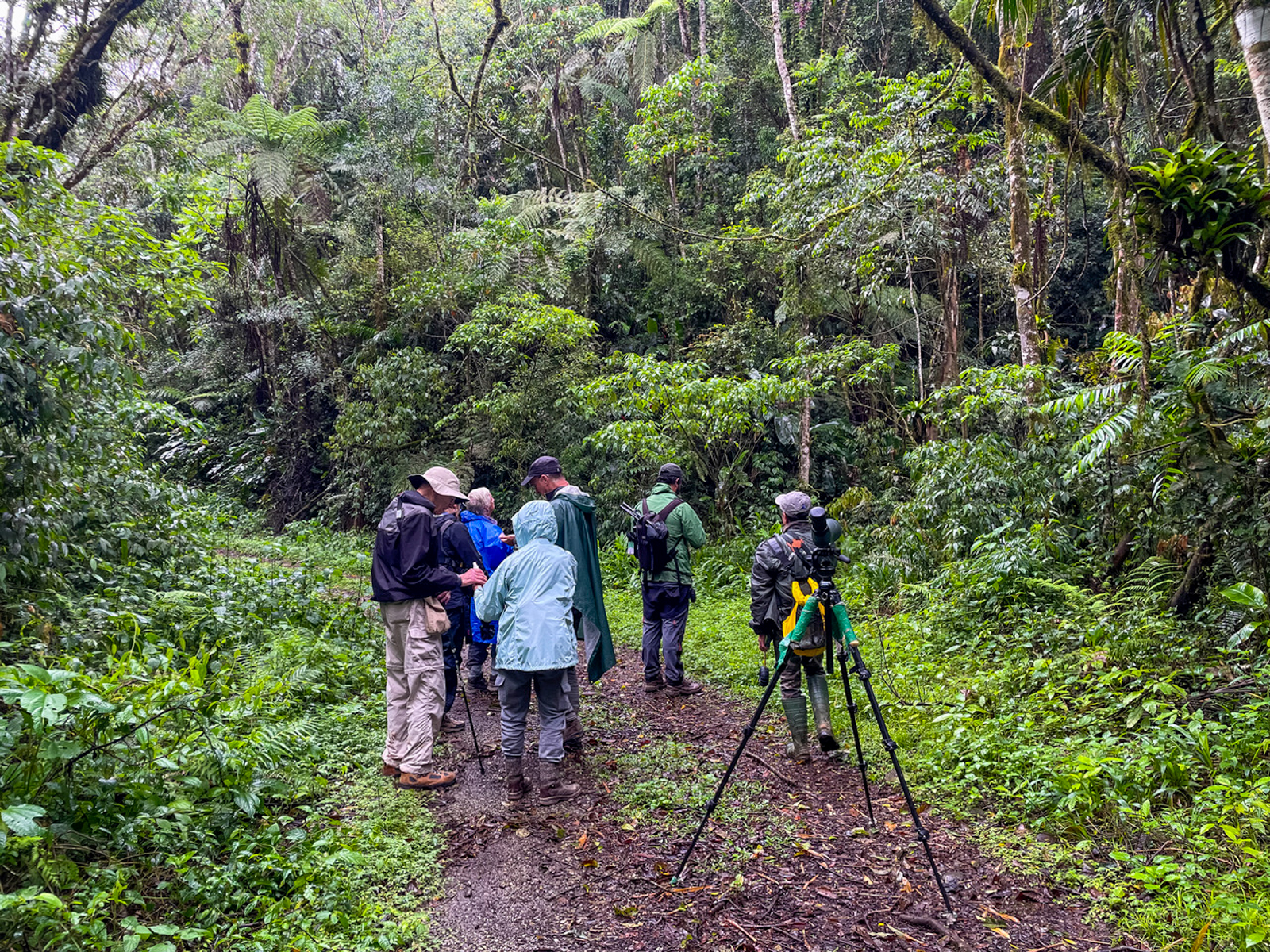
Intervales hike © Steve Ogle
On our first day here we went up Carmo Road, via two pickup trucks, one of which had an exhaust problem. We were joined by Bauchinho, a local guide, and brother of Gerson who helped us last year. As soon as the road leveled off, we got out and walked along a ridge and were instantly into the first of many mixed flocks. Today was the type of day that birding dreams are made of, with species after species popping into view, and great looks of both common and elusive birds. Today happened to be the October 9th eBird big day, so we of course had a little bit more incentive to keep track of what we were seeing. Some of what ended up on our Big Day list included Black-fronted Piping-guan, Golden-rumped Euphonia, Sibilant Sirystes, Ochre-breasted Foliage-Gleaner and White-bearded Antshrike. We continued down the road picking up some key species, with Mantled Hawk, White-breasted Tapaculo, Ochre-rumped Antbird and especially good views of Short-tailed Anththrush. Much time was spent trying to see a Giant Antshrike and most of us got glimpses of a wing or tail, but not both. In the afternoon we checked out the Solitary Tinamou and Spot-winged Wood-Quail feeding station, with success on both. We had a close-up look at a roosting Long-tufted Screech-Owl. A quick stop by Purple-crowned Plovercrest lek had us wanting more. Then, to top off a great day we went out to see a pair of dancing Long-trained Nightjars and had a bonus sighting of a Rufous-barred Owl!
Our second full day included a walk in the western edge of the park, seeing White-necked Thrush, White-browed Woodpecker, Blue-bellied Parrot, Rufous-tailed Attila, Sao Paulo Bristle-Tyrant and Sharpbill. The weather was pleasant, overcast and basically perfect for birding. It only rained slightly later on when we explored areas around the visitor’s centre, visited a lek of Dusky-throated Hermit, and encountered several mixed flocks around the soccer field. The next day we went on a hike through an area with dense bamboo. The target was Atlantic Royal Flycatcher and we saw this fantastic bird near a nest. Other species were Barred Forest-Falcon, Rufous Gnateater and Dusky-tailed Antbird. Later on we drove around cleaning up on some more endemics, including Hangnest Tody-Tyrant and Serra do Mar Tyrant-Manakin, both in the same bush! We had some fun with a couple of Pavonine Cuckoos, also. Let’s not forget some of the more common and/or gawdy birds we encountered that kept our interest: Boat-billed Flycatcher, Green-headed Tanager, Ruby-crowned Tanager and Buff-necked Ibis (sounds exotic!).
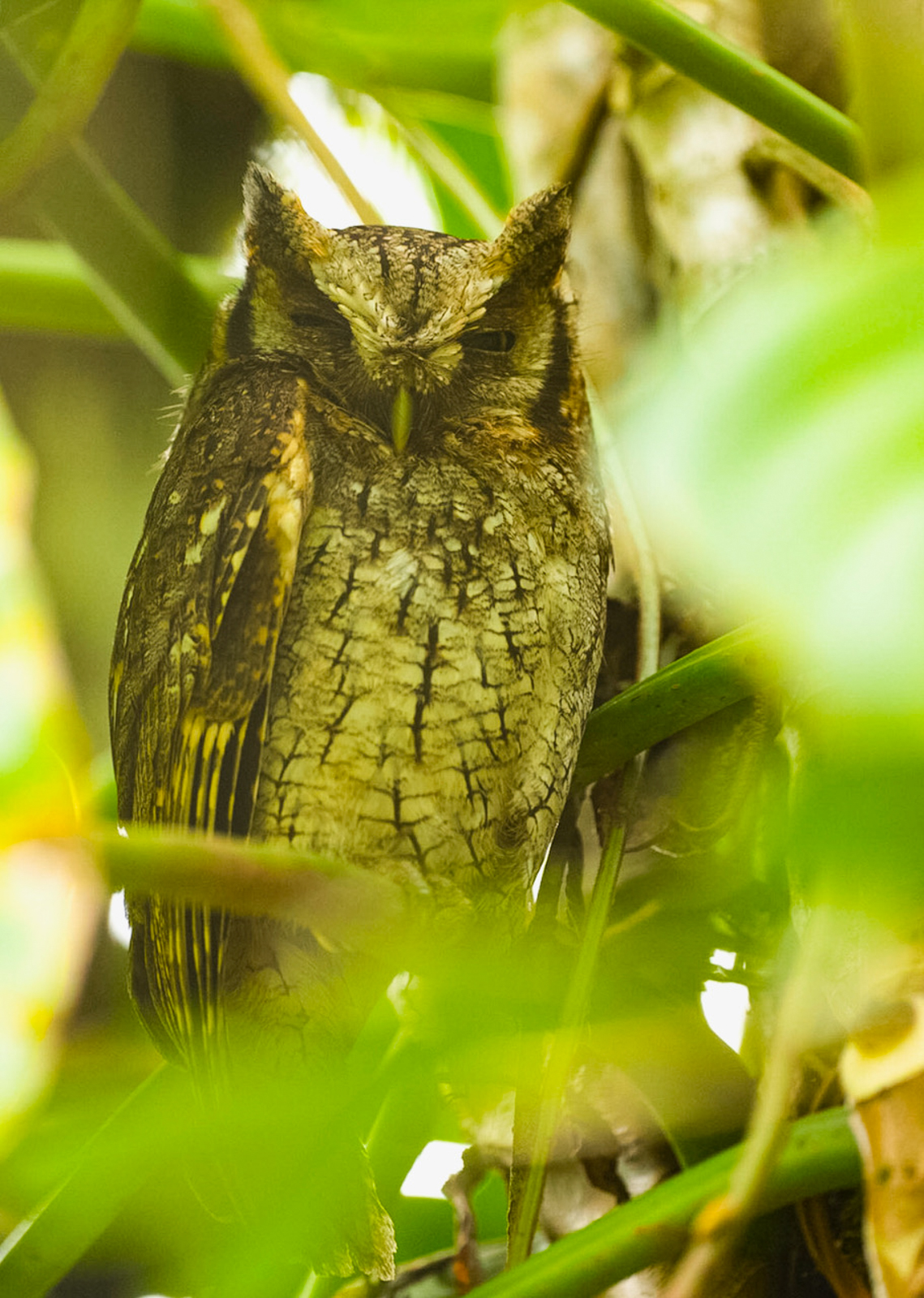
Long-tufted Screech-Owl © Steve Ogle

Serra Do Mar Tyrant-Manakin © Steve Ogle
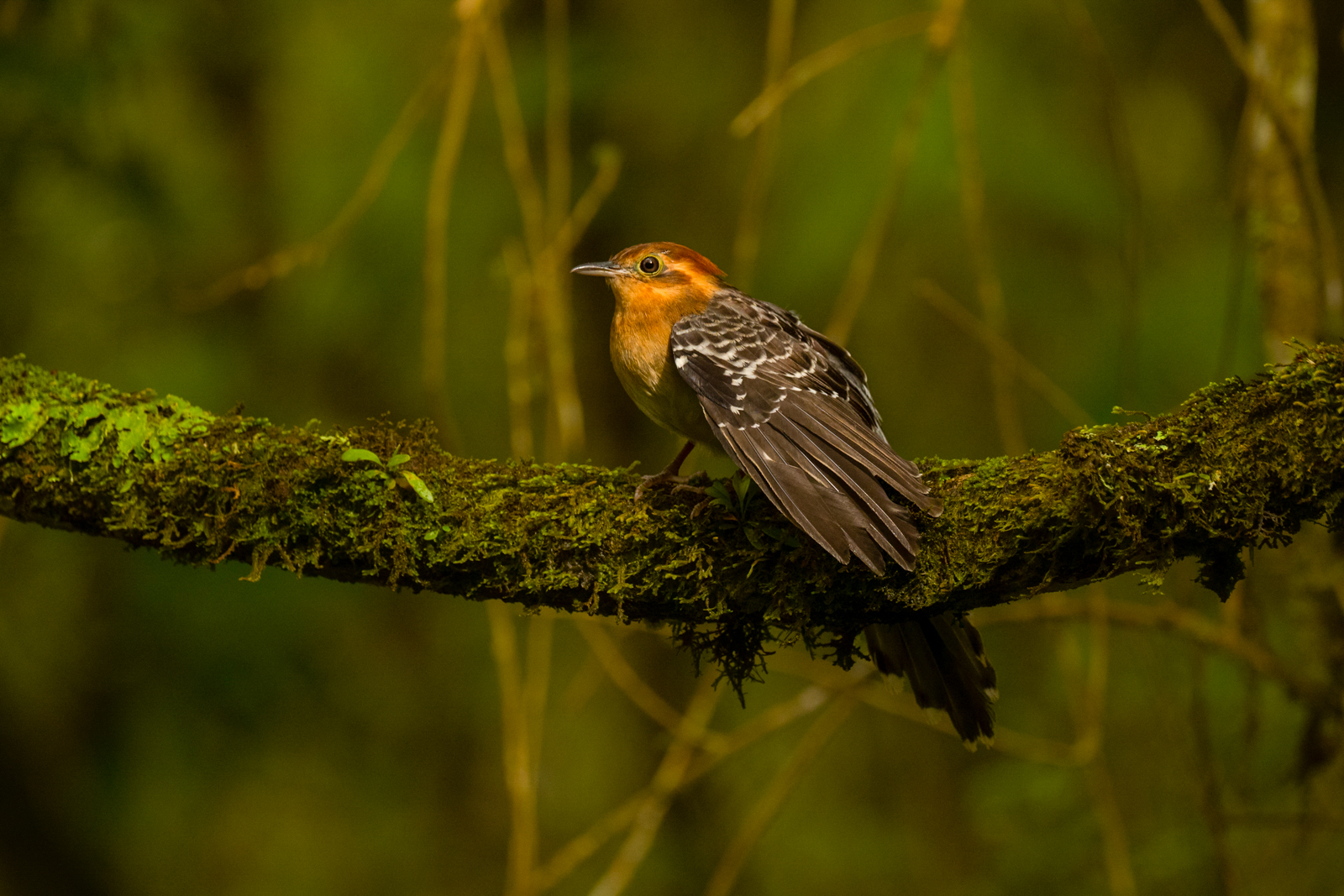
Pavonine Cuckoo © Steve Ogle
Our final morning we walked out-and-back on another road and most of us had glimpses of lots of rufous: Rufous-capped Antthrush, Rufous-capped Motmot, Rufous-crowned Greenlet, Rufous-headed Tanager and Rufous-browed Peppershrike. Actually, the last species was heard-only, as usual! At this point we had observed around 340 species and heard several more (total 347). Everyone had their own favourite birds, and there were too many to choose from for “cutest.”
After packing up, we drove for about 4.5 hours to the airport where our lovely group parted ways. It was a good time and we hope to see everyone again on another tour.

Our Group



